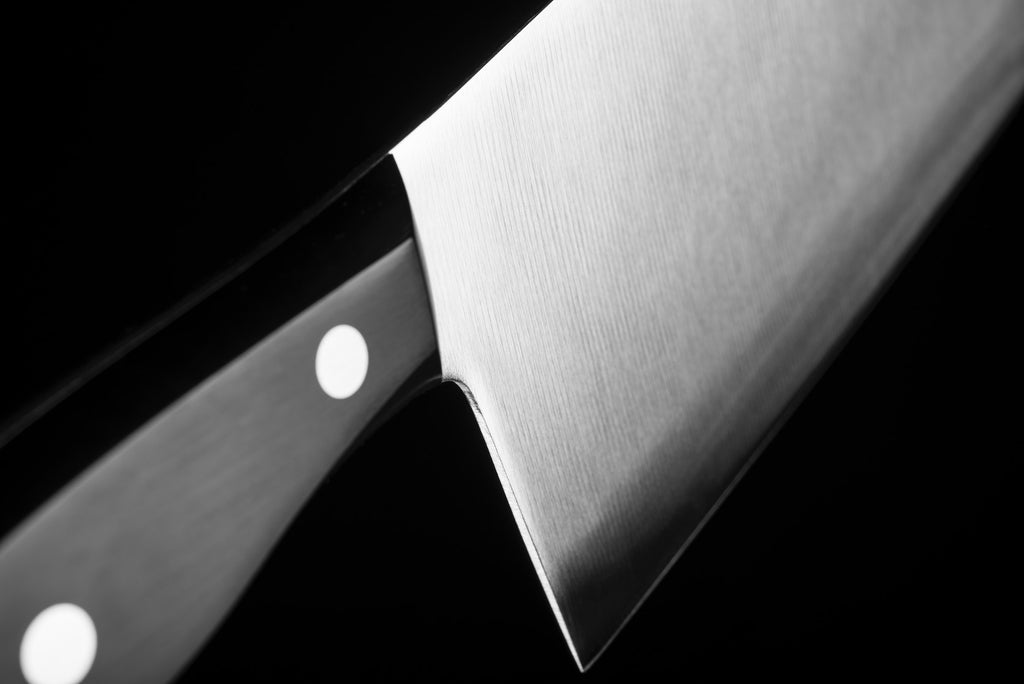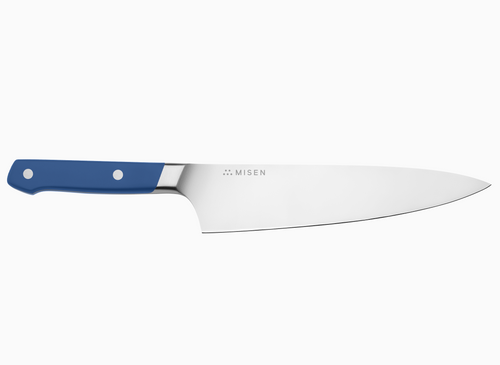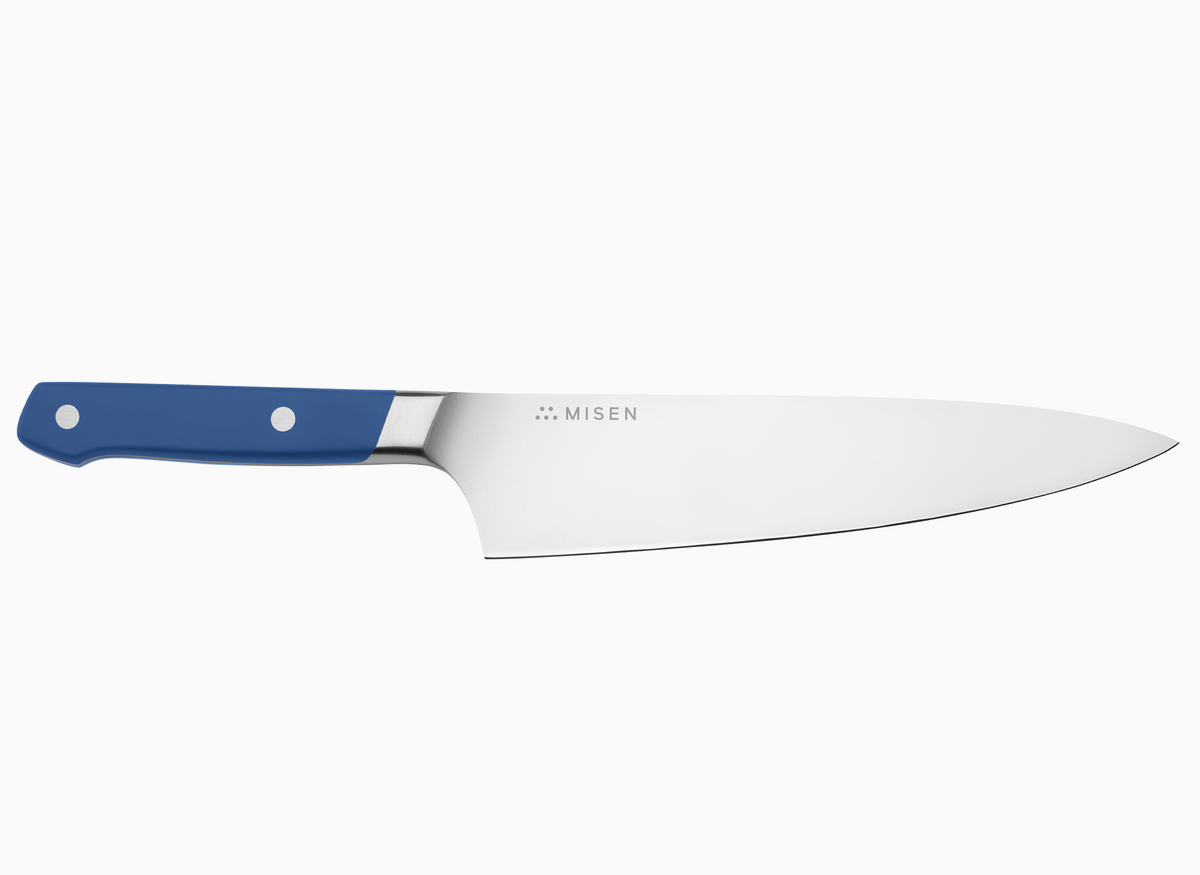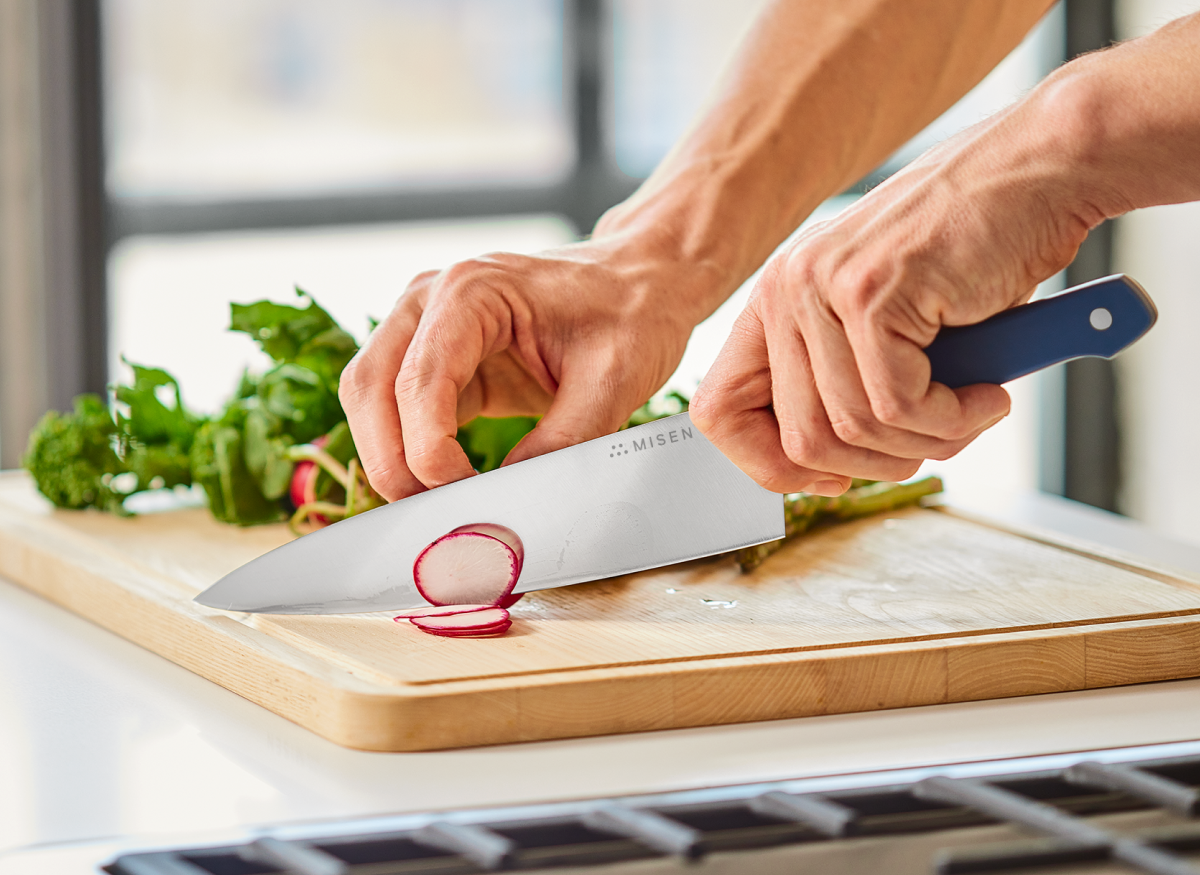How the Knife Tang Affects Your Knife
 You can recognize a full tang knife by the rivets on the handle.
You can recognize a full tang knife by the rivets on the handle.
- There are different types of tangs, which can affect a knife’s use and durability.
- Applying too much force might cause some tangs to snap or separate from the handle.
- The best knives have a full tang.
Choosing a professional knife for the kitchen can mean having to wrap your head around some unfamiliar terms. One of them might be the knife’s “tang.” It’s the part of the knife blade that extends into the handle. How far it extends into the handle depends on whether the knife has a full or partial tang.
The weakest part of most things is at a point of attachment, and a knife is no exception. It’s why the best knives are made from a single piece of steel that runs the full length of the knife. When the section of steel inside the handle runs the full length of the handle, it’s known as a full tang. No point of attachment means there’s no area of potential weakening.
A partial tang only extends part of the way into the handle. There are other terms for these partial tangs. You may also hear of them referred to as half-tang or even three-quarter tang knives. Most knives fail because the handle separates or snaps off from the blade at the area where the tang stops.
Knives Feel Stress Too
Few elements of a knife are more important than the tang — even though sometimes it can’t even be seen. The tang contributes to the structural integrity of a knife. You’re constantly pressing down on the blade to chop and slice while you hold the handle. This action places the greatest amount of stress on the knife.
The stress occurs where the tang ends. If the tang doesn’t end and continues to the butt of the handle, there’s no opportunity for stress. That seems like an open-and-shut case for a full tang, but let’s dive deeper and fully understand the role of the tang and why there are different types.
Types of Tangs
 In a full tang knife, the metal from the blade continues to the end of handle.
In a full tang knife, the metal from the blade continues to the end of handle.
A full tang on a knife is a big deal. It’s more expensive to make a full tang knife because it requires more stainless steel or high carbon steel. The visible tang is proof of the knife’s sturdiness. You know you’re using a knife that has no weak points. Some knife makers choose to make the entire handle out of the tang.
Besides wanting you to see the tang, knife manufacturers also must find ways to incorporate it into the handle. Typically, they do this with two pieces of material on either side of the tang, known as scales. The best full tang knives create their handle by adding minimal material to both sides of the tang and securely bolting the three pieces (the tang, plus two scales) together.
Hidden Tang
Some knife manufacturers choose to completely enclose the knife tang so it can’t be seen. In most cases, this means that the knife features a partial tang. This is what’s known as a hidden tang. You won’t know how far into the handle it extends. The tang tapers in size where the blade is attached to the hollow handle. Then it’s held in place by an epoxy adhesive.
This type of partial tang is also called a push tang, which refers to how the knife is assembled. The tapered tang is pushed or forced into the handle material and held in place with a strong adhesive.
Rat-Tail Tang
Besides the push tang, partial tang knives can also feature what’s called a rat-tail or stick tang. The metal for the tang is significantly narrower than the blade. The thin tail looks like a rat’s tail. Often, this narrow extension will have a threaded pommel or cap at the very end of the knife handle, and this helps keep the handle in place.
Tapered Tang
This is related to a full tang. In some knives the tang may extend all the way to the end of the handle. But the tang tapers both in width and thickness, becoming significantly narrower and diminished in height along the way. The design reduces the weight while still allowing for the benefit of a single piece of metal that extends from the tip of the blade to the end of the handle.
Skeletonized Tang
A full tang becomes skeletonized when portions of the inside are removed to reduce the amount of steel and lighten the overall weight of the knife. This helps with balance and helps to retain as much rigidity and durability as possible.
Drawbacks for Any Kind of Knife
These modified tangs may prevent you from leveraging as much force against what you’re cutting. Remember that applying too much force might cause the tang to snap or separate from the handle. If you use your knife on things that are harder to cut through, a partial tang knife will fail before a full tang knife.
You’re not going to apply the same force to your chef’s knife you would with a hunting knife, but you probably will pit your kitchen knife against a feisty acorn squash. Repeated use this way might take its toll on a knife with a partial tang.
Handle Material
There’s a close relationship between the knife tang and the handle. The handle is what you hold on to, and it’s also what holds onto the tang. The two must work well together, so give some thought to the material of the kitchen knife handle you plan to buy.
Many non-kitchen knives have beautifully crafted wooden handles. That makes sense. A hunting or bowie knife will not regularly be exposed to water. But even when treated, wood handles can absorb water and slowly begin to decompose, so it’s not a good choice for a kitchen knife, especially for a workhorse like a chef’s knife.
Certain Japanese-style knives have what is known as a “wa” handle. It’s made of wood and tends to form a handle that’s larger than a German-style knife with a visible full tang. The larger handle makes it easier for some people to grasp and manipulate. They’re beautifully designed but take care using them because these knives usually have only a partial tang. They’re often used to slice soft foods like sashimi.
The most popular kitchen knives have handles made from a non-slip synthetic materials meant to be water resistant and repel bacteria. When used as the scales on either side of a full tang knife, it creates a handle that offers a firm comfortable grip.
The handle material will also add to the weight of the knife, which helps give the knife balance. The center of balance for most knives should be near the bolster — the tapered part of the blade, which turns into the handle. Whether you see it or not, the tang makes up part of the handle.
The Metal Is What Matters
 The weight, type, and amount of steel used in your knife's blade and tang affect its performance.
The weight, type, and amount of steel used in your knife's blade and tang affect its performance.
A full tang offers you the benefit of a sturdier and more balanced knife because more steel is used to make it. And the quality of that steel determines a knife’s performance.
Most kitchen cutlery is made of either stainless steel or carbon steel. Both are known for their strength, but stainless steel knives require less care. The chromium used to make stainless steel reacts with oxygen in the air. It forms a thin protective layer of chromium oxide, which prevents oxidation, which means stainless steel knives can be left wet and won’t discolor.
Carbon steel knives can discolor if not thoroughly dried after washing them. It may not look like rust, but it’s the first step. This discoloration is a form of oxidation called patination, and it’s actually protective in nature.
Patination helps to prevent deeper and more destructive rust spots that will pit the blade. This blackish patina can be easily scratched off, so even though it might offer personality, it’s not a permanent form of protection against corrosion. The only thing can offer than protection is taking better care of your carbon steel knives.
Carbon steel knives are worth a little extra care because the high carbon content contributes to hardness, which helps to keep your knife sharp for longer periods of time. There’s a way to get the best of both worlds. Look for a knife that adds more carbon content to its stainless steel.
The Right Knife for the Right Job
The blades of your kitchen knives are designed to efficiently cut so that you’re able to go from mincing herbs to slicing open a watermelon. While a partial tang knife might be find for mincing herbs, the watermelon will definitely slice better with a full tang knife. The extra resilience offered by full tang knives allows you to put more force into cutting and chopping.
A full tang will perform better and could make prep work easier. Add in premium materials and innovative design, and you’ve got the makings of a perfect knife for your kitchen.








